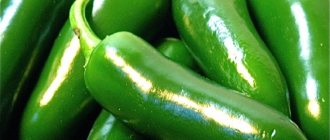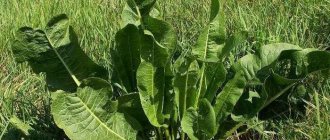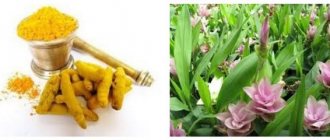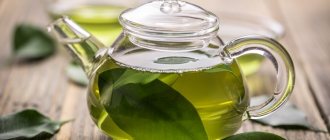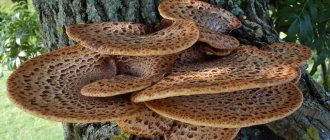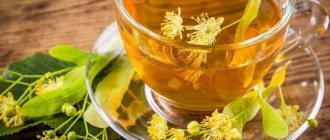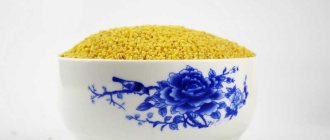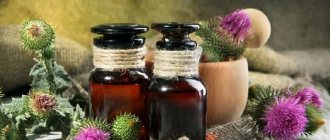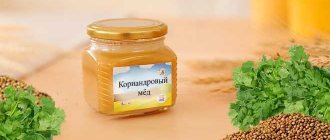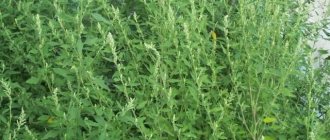What is coriander
Coriander is a herbaceous spicy crop belonging to the Apiaceae family, genus Coriandrum. Its name comes from ancient Greek. "κόρις", meaning "bug".
The relationship between coriander and this not very pleasant-smelling insect is understandable - the plant at the ripening stage emits a specific odor due to the high content of ester (decylaldehyde) present in the plant. By the end of ripening, this bug smell almost completely disappears.
Coriander greens can reach 0.7 m in height. The root goes to a depth of 0.3-0.4 m and has the shape of a spindle. The shoots are erect, without pubescence, branching. The leaves are always bright green, the shape differs depending on the location: the basal leaves have wide lobes, incised-serrate along the perimeter, the stem leaves look pinnate, “sit” on short petioles.
The flowers are umbellate, pinkish or snow-white. The seeds are brown in color, spherical with ribs. There are many varieties of this plant, but the most popular are Debut, Amber, Avangard, Taiga and Picnic.
The homeland of the herb is the eastern Mediterranean. Wild varieties also grow in India, China, South America, Russia, including the Caucasus. Coriander is a spice that is grown all over the world and is classified as a green vegetable.
The plant is resistant to cold and ripens quickly. It can be planted in early spring and harvested several times a season.
The plant is heat-loving and tolerates drought easily. Grows best on loamy and sandy soil. It grows poorly on heavy clay soil. Does not require special care except for watering, weeding and loosening.
In its green form, coriander can be consumed until it begins to bloom (June-July). The leaves of young shoots (10-15 cm) have a richer taste.
The seeds of the plant, known to culinary specialists as coriander spice, are also eaten, enriching the taste of food with aromatic spice. The grains take longer to ripen, so they are harvested only at the end of the growing season, i.e. in August-September.
History of the spice
Coriander is a fairly ancient plant; its seeds were found in the tombs of the pharaohs. The spice came to Europe and colonial America from the Roman Empire.
Then from Spain it was brought to Russia. For a long time the plant was considered a weed. The first mention of spice as a culture was found in a book of the 18th century. Mass cultivation of this plant began in 1830.
Coriander and cilantro - is there anything in common?
The second name for coriander is cilantro. However, these two words refer to different parts of the plant. Coriander is its seeds, and the green part is also called cilantro (from Georgian ქინძი – kindzi). However, people often call any part of the plant coriander.
Spicy taste and aroma
Greens smell like bugs until ripe; after ripening, this aroma becomes dull, but some people still smell it. Others associate the aroma of the plant with cognac, and still others with freshly cut grass. Cilantro seeds smell a little different. The aroma is similar to tree bark with notes of fresh zest.
Fresh cilantro has a spicy, peppery, lemony flavor. It has the perfect combination of heat and bitterness. The grains are slightly sweet, similar to anise. Therefore, they are often used when baking baked goods.
Chemical composition
Coriander has found application in cooking thanks to its rich composition:
- retinol, B vitamins;
- micro-, macroelements;
- plant polyphenolic compounds;
- easily digestible carbohydrates;
- tanning agents;
- coarse fibers;
- ethers.
Coriander seasoning contains in 100 g:
- 23 kcal;
- fats - 500 mg;
- proteins - 2300 mg;
- carbohydrates - 900 mg.
According to the pharmacopoeia, the ratio of heavy metals in this product is absolutely safe.
Are cilantro and coriander the same plant or not?
Both names refer to different parts of the same plant. Coriander refers to the brown seeds, and cilantro refers to the leafy mass. The Russian language borrowed the second word from Georgian; in colloquial speech you can hear the variant “cilantro”.
Pictured is cilantro
Coriander in the photo
Interesting: a description of Coriandrum sativum was found in the oldest Vedic text - the Atharva Veda.
Are cilantro and coriander the same plant?
Coriander is an annual plant. Belongs to the Umbelliferae family, it came to us from the Eastern Mediterranean; the beneficial properties of the herb were discovered by the ancient Egyptians. Mention of it as a worthy medical remedy is found in the works of Hippocrates.
The name coriander is Greek, comes from the word koris, which translates as bug. Anyone who has ever been close to a growing plant understands why it was called that. It is difficult to forget the peculiar aroma of the plant, very reminiscent of the smell of a crushed bug. Not everyone likes it; some people cannot eat greens because of the smell.
What does coriander look like? The plant has a straight, smooth stem that branches at the top. Height can vary from 0.3 m to 0.45 m. Carved leaves with long petioles are similar to parsley leaves.
The root is spindle-shaped. Flowering begins early, in June, and continues throughout the summer. The flowers are small white or pale pink, collected in umbels. They are grown everywhere in all regions of the country.
The fruits in the southern regions ripen already in July, and in the central regions, in the Urals and Siberia, they ripen at the end of August or September. The fruits are small and spherical.
People who are far from gardening often have confusion about what cilantro is and what coriander is. They think these are two different plants. Cilantro is a green herb, and the coriander plant is something completely different, with ball-shaped fruits.
In fact, cilantro and coriander are the same thing.
Before the formation of inflorescences, the spicy green herb is called cilantro, but the seeds that have ripened and turned into dry brown balls are called coriander. It would not be a mistake if the herbaceous part is also called coriander.
Coriander has found wide application as a seasoning. Its fruits are used not only in home kitchens as a spice, but also in industries, in the production of confectionery, bread, liquor, beer, and perfumes.
Scientific medicine uses cilantro seeds widely. They are recommended as a means to increase appetite, improve gastrointestinal function, reduce flatulence, stimulate bile production, relieve inflammation, and a good antiseptic.
In pharmacies you can buy medicinal teas containing its fruits:
- choleretic;
- antihemorrhoidal;
- laxative.
Coriander fruits are widely used for the treatment and prevention of diseases. There are many recipes in folk medicine; they have long been time-tested.
Cilantro surprises with its composition, containing the main group of vitamins and minerals. It contains a lot of essential oils and organic acids. The composition of nutrients is completely balanced and well absorbed by the human body. The quantitative composition of vitamins is presented in the table.
| Vitamins | Content in milligrams |
| PP | 1,114 |
| K | 0,31 |
| E | 2,5 |
| C | 27 |
| group B | 1,01 |
| A | 0,337 |
| β-carotene | 3,93 |
| Kholin | 12,8 |
Minerals contained in coriander:
| Minerals | Content in milligrams |
| Selenium | 0,0009 |
| Manganese | 0,426 |
| Copper | 0,225 |
| Zinc | 0,5 |
| Iron | 1,77 |
| Phosphorus | 48 |
| Potassium | 521 |
| Sodium | 46 |
| Magnesium | 26 |
| Calcium | 67 |
If you take 100 g of cilantro leaves, then they contain, with a calorie content of 23 kcal:
- 92 g water;
- 1.47 g ash;
- 2.8 g dietary fiber;
- 0.87 g monosaccharides and disaccharides;
- 0.014 g saturated fatty acids.
There are people who should refrain from eating coriander in food and as part of medicinal preparations and teas:
- First of all, these are women during pregnancy and breastfeeding.
- Also people with circulatory problems, diabetes, hypertension, thrombophlebitis, thrombosis, kidney disease.
- Use caution and only in small quantities for patients with stomach ulcers and chronic cholecystitis.
- Healthy people are advised to consume coriander without fanaticism and in moderation.
In folk medicine, the herbaceous plant has long been used:
1. Skin diseases can be treated with cilantro. Take fresh leaves, well washed in several waters. Knead them and place them on damaged skin. Thanks to the antibacterial properties of the plant juice, the wound will heal faster and the skin will be restored.
2. Essential oil. Essential oil is prepared from mature coriander seeds. It helps well with helminthic infestations. If your eyes are inflamed (conjunctivitis, keratitis), coriander oil can help; you need to dilute it with water and wash your sore eyes with it. Redness and inflammation will go away.
3. If you have digestive problems: poor appetite, constipation, add cilantro or ground coriander to your food. Appetite will noticeably improve and intestinal function will improve. All this is due to the fact that coriander improves the digestion of food and helps assimilate it.
4. Cilantro helps with swelling. Removes excess fluid from the body. Acts as a mild diuretic. Relieves inflammation caused by cystitis, reduces pain when urinating.
5. Eating cilantro is beneficial for older people. With age, vision deteriorates and the risk of eye diseases (cataracts, glaucoma) increases. If you consume cilantro in the summer, you can stop the development of these diseases or prevent the onset.
6. An infusion of seeds is prepared quickly and helps with colds and pleurisy. You will need a glass of boiling water and a tablespoon of seeds. Leave for 15 minutes. Drink a glass of infusion throughout the day in three doses. Definitely before meals.
7. You can independently prepare a mixture of herbs for a choleretic infusion. You will need: coriander seed (1 part), dry mint leaves (1 part), immortelle flowers (2 parts). Grind all components and mix. For 0.5 liters of boiling water you need 1 tbsp. l. mixtures. Leave for 20 minutes. Drink four times.
Beneficial features
Thanks to its rich composition, coriander has therapeutic and preventive effects:
- stimulates the immune system;
- strengthens vascular walls;
- reduces blood pressure;
- has antibacterial, anti-inflammatory, antiviral effect;
- maintains joint mobility, strengthens bones and muscles;
- has a good effect on the circulatory system;
- improves the functioning of the gastrointestinal tract;
- relaxes the nervous system;
- eliminates swelling, improves the functioning of the urinary system;
- strengthens gums;
- helps with bloating and colic;
- normalizes blood sugar levels;
- relieves pain;
- improves appetite.
Of course, the leaf part or grains of this plant are not a panacea for all diseases. There is no point in using them as therapy. But coriander is an excellent preventive remedy and improves the patient’s well-being if its use is combined with an effective treatment regimen prescribed by a doctor.
Cilantro is a natural product, but still has a number of contraindications. Therefore, before consuming it on a regular basis, people with chronic diseases and allergies are advised to consult a specialist.
Use in cooking
In cooking, the spice has a wide range of uses. It is used in cheese making, making sausages, baking bread, and added to snacks, desserts, etc.
Where to add coriander:
- pea and lentil soup;
- stew with cabbage;
- bread;
- leaf salads;
- sauces for meat and fish;
- goulash;
- vegetable dishes;
- warming drinks;
- spicy mixtures;
- shashlik;
- sausages and deli meats.
Features of use
To obtain an unforgettable taste, the spice must be used correctly. For example, greens (cilantro) are recommended to be consumed as an independent snack, and also added to:
- salads with vegetables;
- chicken dishes;
- shrimp soup;
- first courses with lentils and beans;
- zucchini pancakes.
Ground coriander is suitable for:
- Korean carrots;
- Chicken Tikka Masala;
- Pho soup;
- Mexican scrambled eggs;
- pilaf;
- turkey chili;
- beans with curry;
- of bread.
Whole coriander is added to:
- sausage, balyk, boiled pork;
- winter preparations;
- brines and marinades.
What spices does it go with?
Coriander perfectly complements the following spices:
- pepper mixture;
- turmeric;
- dried garlic;
- caraway;
- paprika;
- utskho-suneli;
- Imeretian saffron (marigold);
- khmeli-suneli.
Thanks to this combination, the dish turns out to be very aromatic and has an unusual and piquant taste.
What to replace
Sometimes spices may not be on hand or its use is limited by an allergy to the plant. In these cases, you can choose an alternative. What can you replace coriander with:
- Provençal herbs;
- anise;
- basil;
- cumin;
- thyme;
- saffron;
- sage;
- cloves
What to cook with spices
Gourmets will love the bitter honey marinade. Ingredients:
- vegetable oil, honey, crushed coriander, soy sauce, taken 2 tbsp each;
- lemon or lime juice.
Dip salmon or salmon steaks into the spicy-sweet marinade and leave for 1 hour. The marinated fillet is sent to the oven for baking or grilled. Instead of fish, take chicken breast, meat or shrimp.
We also recommend: Herbes de Provence
Why not serve a healthy salad of cucumbers, dill, and cilantro with the main course. For spiciness, the vegetable mixture is flavored with a pinch of ground grains and ginger, and seasoned with lemon juice or wine vinegar. It will help digest food and speed up metabolism.
Preparation and storage
Seed collection must be done in August. Only ripe grains should be collected, otherwise the spice will not have a very pleasant smell. Collection and further storage of seeds:
- Cut and place the greens in a shaded place with good ventilation to dry.
- Rub with your fingers to separate the seeds.
- Place them in a glass container or canvas bag.
- Store in a cool, dry place for up to 4 years.
Greens need to be fresh and strong. Wilting leaves with yellowish veins are not suitable.
Cilantro can be stored in several ways. Natural drying option:
- Wash the shoots and dry.
- Place greens on paper towels or parchment (to absorb moisture) out of direct sunlight.
- After complete drying, chop the greens.
- Place it in an airtight container. Store in a dark place with low humidity. Shelf life - 1 year.
Processing in the oven:
- Wash the greens, dry and chop.
- Preheat the oven to +40...+45 degrees (at a higher temperature, the herb will lose its properties).
- Distribute the leaves evenly on the baking sheet. Keep in the oven for 4-5 hours.
- The finished spice retains a green tint (becomes darker) and crumbles in your hands.
- Storage conditions are the same as for natural processing.
You can also freeze greens for the winter:
- in ice cubes;
- in packages.
How to store greens in cubes:
- Wash the bunches, separate the leaves from the stems and chop finely.
- Place the crushed herbs among the ice trays, filling them halfway.
- Fill with water or broth and place in the freezer.
- After freezing, transfer the cubes to plastic (to release the mold) and store in the freezer.
How to freeze in special bags:
- Wash the greens and dry on paper towels.
- Finely chop and place in freezer bags.
- Add vegetable oil to prevent the leaves from sticking together and place in the freezer.
There is another interesting way to store greens - with butter:
- Prepare the grass as in the previous options.
- Mix 3 tbsp. l. freshly chopped herbs with 100 g of butter.
- If desired, add spices and lemon juice.
- Wrap in parchment paper, place in a bag and place in the freezer.
You can pickle greens for the winter:
- Cut the grass back to the rough part of the shoots.
- Remove damaged leaves.
- Chop the greens coarsely.
- Mix with salt (a glass of coarse salt for 1 kg of cilantro) and crush with your hands so that the herb is soaked and juice appears.
- Place cilantro in 0.5 liter glass jars and compact.
- If desired, add a small amount of vegetable oil.
- Seal the jars and place in the refrigerator.
Fresh herbs can be stored in the refrigerator for up to a week. Then it begins to turn yellow, losing its taste, aroma and beneficial properties.
How much coriander in a teaspoon
In recipes, the amount of spices is indicated in grams. To avoid mistakes, if you don’t have a kitchen scale, you can use a spoon.
- Half a teaspoon contains 1.25 g of fruit.
- In a spoon without top - 2 - 2.20 g.
- In a heaped spoon – 3.0 g.
1 hour l. ground seasoning contains 6 g, 1 tbsp - 15 g. Standard packages from the store are packaged in 20 g. The spice is included in curry, where the specific gravity is about 30%. The bulk density of the product will be determined by the volume and space between copies. Average coriander values are above 520 kg/m3.
We also recommend: Coffee with cardamom: recipes and benefits
Interesting Facts
- Russia is in first place in spice exports.
- Coriander is a honey plant.
- The herb is also used in medicine, pharmacology, perfumery, cosmetology, and aromatherapy.
- From a botanical point of view, cilantro is a weed, because its seeds are characterized by high “survivability” and the ability to self-sow.
Coriander is a versatile spice that can be added to almost every dish. Of course, it can be replaced with other spices and herbs, but the taste will still be slightly different. This plant has no perfect analogue.
In addition to the fact that the spice improves taste and gives an unforgettable aroma, it has a beneficial effect on the body. However, we must not forget that coriander is contraindicated for people with certain chronic diseases and those who have an allergic reaction to the spicy plant. In this case, consuming the spice may have a negative impact on health.
Where and how is coriander often used?
Basically, of course, this plant is used in the culinary field. Moreover, they eat not only the seeds, but also the greens of this plant. And it cannot be said that it is intended exclusively for one type of dish. It can be used for meat, salads, and even for preserving vegetables.
Interestingly, ground coriander is used in some recipes for baking bread products. In our native country, as well as in European countries, coriander seeds are an ingredient in recipes for baking rye bread (Borodinsky varieties), usually either as a replacement or as an addition to traditional caraway seeds.
Coriander is mainly used as a seasoning.
To add aromatic notes, ground seasoning is added to the first and second courses. Famous German sausages are rarely produced without coriander seeds. The seeds are also used in the production process of brewing special types of Belgian beer.
But the merits of the spice do not end there. Coriander has also found its place in perfumery. For example, the essential oil of this plant is widely used in cosmetology or soap making. It pairs great with scents such as bergamot, cinnamon or citrus.
In folk medicine, too, it could not be done without it. Tinctures and decoctions with it are very useful, mainly for the digestive system. Here, for example, are a few recipes that may well be useful to you.
In one preliminary study, coriander essential oil was shown to inhibit gram-positive and gram-negative bacteria. Coriander roots have a greater depth of pronounced flavor than leaves. Asian cuisine makes extensive use of roots; traditional Thai dishes - soups or curries - are rarely complete without spicy seasoning.
Tincture for the stomach
It will help tidy up your metabolism and control the production of bile.
Components:
- Coriander – 1 teaspoon;
- Hot water – 1 glass.
Pour hot water over the coriander and close the lid. The tincture must be kept for a couple of hours. You need to drink about a quarter glass three times a day.
And together with cumin, the spice can help eliminate gases and reduce the acute phase of hemorrhoids.
Calming infusion
Coriander is often used as a sedative. And this is not surprising - it perfectly relieves anxiety and is a very effective antidepressant. Frequent nervousness will no longer be a serious problem for you.
Components:
- Coriander – 1 tablespoon;
- Vodka – 0.5 cups.
Pour vodka over the spice and cover with a lid. The tincture must be kept for a couple of weeks in a cool and fairly dark place. The finished infusion must be filtered. It is advisable to drink twenty drops three times a day.
